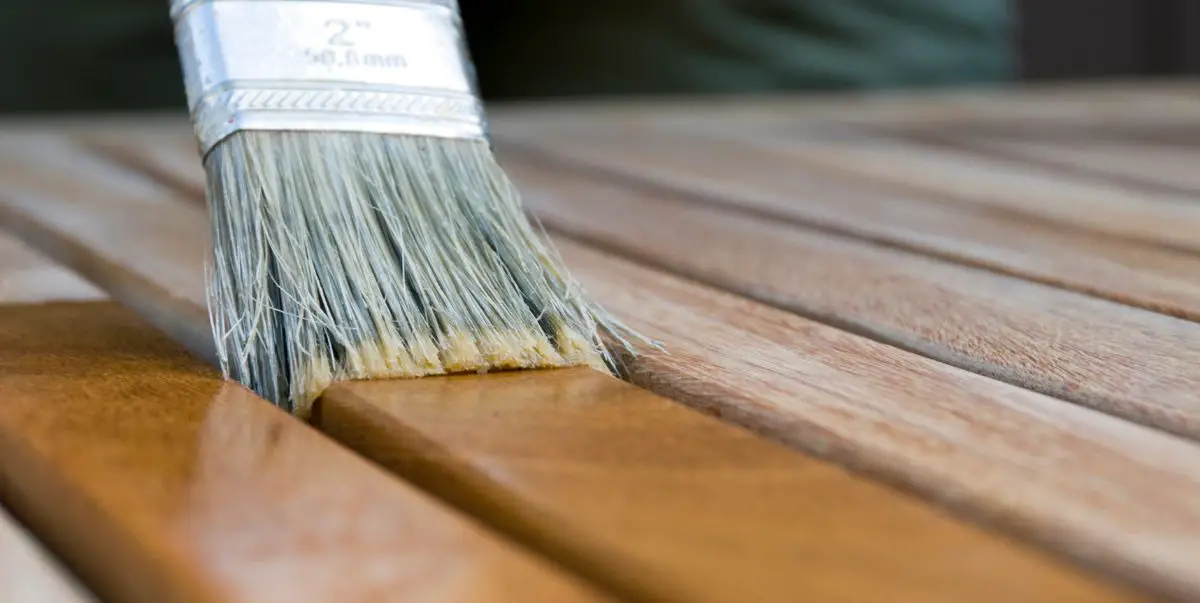The temperature threshold for staining wood depends on the specific stain product, but generally, below 50°F (10°C) is too cold. Staining wood in excessively cold temperatures can result in poor stain absorption and drying, leading to an uneven finish.
It is crucial to ensure temperature conditions are within the recommended range to achieve the desired outcome when staining wood. Introducing the right stain to your woodwork can enhance its beauty, protect it from decay, and increase its lifespan. However, timing plays a vital role in achieving a successful staining project.
Understanding the optimal temperature conditions for staining wood is crucial to ensure the best results. We will explore the temperature range that is considered too cold for staining wood and the implications it can have on your project. By following these guidelines, you can avoid potential issues and create stunning wood finishes that will stand the test of time.
Understanding Wood Staining In Cold Temperatures
Wood staining in cold temperatures requires careful consideration as excessively low temperatures can affect the staining process. It is recommended to avoid staining wood when the temperature falls below 50 degrees Fahrenheit to ensure proper absorption and an even finish.
Understanding Wood Staining in Cold Temperatures
When it comes to applying stain to wood, temperature plays a crucial role in achieving optimal results. Staining wood in cold temperatures can present a set of challenges that need to be understood to ensure the stain adheres properly and creates a beautiful finish. In this section, we will explore the effects of cold temperatures on wood staining and the factors that can influence the outcome.
Effects of Cold Temperatures on Wood Staining
Cold temperatures can have a significant impact on how stain behaves on wood surfaces. It’s essential to be aware of these effects to prevent any potential issues. Here are some key points to keep in mind:
1. Poor Absorption: In colder temperatures, wood tends to contract, reducing its ability to absorb the stain effectively. This can result in an uneven application and an unsatisfactory finish.
2. Slower Drying Time: Cold temperatures slow down the drying time of the stain. This means that it will take longer for the stain to dry and cure properly. If the stain doesn’t have enough time to dry before exposure to moisture or heavy traffic, it can result in a damaged or blotchy finish.
3. Incomplete Color Development: Staining wood in cold temperatures can affect the color development of the stain. The colder conditions may hinder the stain’s ability to fully penetrate the wood fibers, resulting in a lighter or faded color.
Factors Affecting Wood Staining in Cold Weather
Several factors come into play when it comes to wood staining in cold weather. Understanding these factors will help you adjust your staining process accordingly. Here are some crucial considerations:
1. Optimal Temperature Range: The ideal temperature for staining wood is typically between 50°F and 90°F (10°C to 32°C). Staining outside this temperature range can lead to complications.
2. Humidity Levels: High humidity levels can also impact the effectiveness of wood staining in cold temperatures. Excessive moisture in the air can prolong the drying time of the stain and affect its overall performance.
3. Stain Type: Certain stains are formulated specifically for cold weather conditions. These cold-weather stains are designed to perform better in lower temperatures and still provide a satisfactory result.
4. Surface Preparation: Proper surface preparation is vital for successful wood staining. In cold temperatures, it becomes even more important to ensure the wood is clean, dry, and free from any dirt or debris that could hinder stain absorption.
In conclusion, understanding the effects of cold temperatures on wood staining and the factors that come into play can help you achieve the desired results. By considering factors such as temperature range, humidity levels, stain type, and surface preparation, you can ensure a smoother staining process even in colder conditions. Taking the time to prepare adequately and choosing the right stain for the temperature will greatly enhance the durability and aesthetic appeal of your wood surfaces.

Ideal Temperature Conditions For Wood Staining
When it comes to staining wood, it’s important to consider the ideal temperature conditions. Staining wood in the wrong weather conditions can lead to unsatisfactory results and potential damage to the wood. In this article, we will discuss the optimal temperature range for wood staining and the recommended weather conditions for achieving the best results.
Optimal Temperature Range For Wood Staining
The temperature plays a crucial role in the effectiveness of wood staining. Both the air temperature and the temperature of the wood itself should be within a certain range to ensure proper absorption and drying of the stain. The ideal temperature range for wood staining is generally between 50°F (10°C) and 90°F (32°C).
Staining wood at temperatures below 50°F (10°C) can slow down the drying process and result in longer drying times. It can also affect the absorption of the stain into the wood, leading to uneven or blotchy staining. On the other hand, staining wood at temperatures above 90°F (32°C) can cause the stain to dry too quickly, preventing proper penetration and resulting in a less durable finish.
Recommended Weather Conditions For Staining Wood
In addition to the temperature range, there are other weather conditions that can impact the staining process. It’s important to choose a day with favorable weather conditions to achieve the best results. Here are some recommended weather conditions for staining wood:
- No rain: Staining wood should be done on a dry day, preferably when there is no rain in the forecast. Rain can wash away the stain and disrupt the drying process, leading to an uneven finish.
- Moderate humidity: Staining wood in high humidity can prolong the drying time and affect the absorption of the stain. It’s best to stain wood when the humidity is moderate, between 30% and 70%.
- No direct sunlight: Direct sunlight can cause the stain to dry too quickly, resulting in a less consistent finish. It’s recommended to stain wood in a shaded area or during times when the sunlight is less intense.
- Mild wind: While wind can help speed up the drying process, excessive wind can cause the stain to dry too quickly and unevenly. Staining wood on a day with mild wind conditions is ideal.
By paying attention to the optimal temperature range and recommended weather conditions for staining wood, you can ensure a smooth and successful staining process. This will result in a beautiful and long-lasting finish that enhances the natural beauty of the wood.
Precautions For Staining Wood In Cold Weather
Precautions for Staining Wood in Cold Weather:
Tips For Staining Wood In Cold Temperatures
When working with wood stains in cold weather, it’s essential to take extra precautions to ensure a successful and long-lasting finish. The colder temperatures can significantly impact the staining process, so it’s important to be prepared and follow specific guidelines.
Protecting Stained Wood From Frost Damage
Protecting freshly stained wood from frost damage is crucial in cold weather. Even a brief exposure to freezing temperatures can ruin the finish, so it’s important to take proactive measures to safeguard the wood.
Alternative Solutions For Cold Weather Wood Finishing
When staining wood in cold weather, it’s important to consider the temperature. Staining wood below 50°F can lead to poor adhesion and drying. To combat this, using a heated space, warmers, or specialized low-temperature wood stains can provide alternative solutions for cold-weather wood finishing.
Indoor Staining Options
If the weather outside is too cold for staining wood, don’t worry! There are alternative solutions that you can explore to ensure your wood finishing project is a success. First, let’s discuss indoor staining options. Staining wood indoors provides a controlled environment where temperature fluctuations are less likely to interfere with the staining process. This is especially beneficial when the weather outside is too cold.
One indoor option worth considering is setting up a designated area for staining wood. Ensure proper ventilation by opening windows or using fans to circulate the air. To avoid any mess, lay down drop cloths or newspapers to protect your flooring. It’s also a good idea to wear protective gear such as gloves and safety goggles while staining indoors. With these precautions in place, you can confidently proceed with your wood staining project, regardless of the outdoor temperatures.
Use Of Heaters Or Warmth Sources For Outdoor Staining
If you prefer to stain wood outdoors despite the chilly weather, you can still do so with the help of heaters or other warmth sources. Creating a warmer environment will allow the stain to adhere properly and dry effectively. However, it’s crucial to proceed with caution and ensure your safety comes first.
One option is to use outdoor-approved heaters to warm up the area where you’ll be staining. Make sure to keep the heater at a safe distance from the wood and follow the manufacturer’s instructions for safe usage. Additionally, you can consider placing the wood in direct sunlight for a few hours before staining. This will warm up the wood, making it more receptive to the stain.
Remember to monitor the temperature closely while using heaters or warmth sources, as excessive heat can pose a fire hazard. With careful planning and attention to safety, your outdoor wood staining project can still be accomplished even in colder weather conditions.
To sum it up, when the temperatures drop too low for wood staining, there are alternative solutions to consider. Indoor staining options provide a controlled environment, while the use of heaters or warmth sources allows for outdoor staining even in colder weather. Whether you choose to stain indoors or outdoors, ensure safety precautions are in place, and you’ll achieve the desired results for your wood finishing project.

Frequently Asked Questions Of What Temperature Is Too Cold To Stain Wood
What Happens If You Apply Stain When It’s Too Cold?
Applying stain when it’s too cold can cause poor penetration and uneven coloring. The cold temperature slows down drying time and affects adhesion. It’s best to apply stain when it’s above the recommended temperature range to achieve optimal results.
Can You Stain A Deck In 40 Degree Weather?
Yes, you can stain a deck in 40-degree weather. However, colder temperatures may affect the drying process and the stain’s effectiveness. It’s best to check the product label for specific temperature recommendations and use caution to ensure optimal results.
How Cold Is Too Cold To Seal Wood?
Sealing wood can be done in temperatures above 50°F (10°C). Temperatures lower than this can affect the sealant’s drying and bonding capabilities.
Is Stain Still Good If It Freezes?
The stain is still good even if it freezes. Freezing doesn’t impact its quality or performance. It’s safe to use once thawed.
Conclusion
Understanding the ideal temperature for staining wood is crucial for achieving the best results. By taking into account the weather conditions, the type of wood, and the stain product, you can ensure a successful staining process. Remember to check the manufacturer’s guidelines for temperature recommendations before beginning any staining project.
With this knowledge, you can confidently take on your wood staining projects and achieve professional-looking results.


